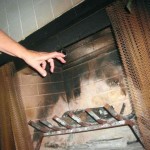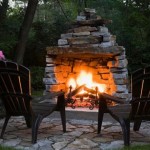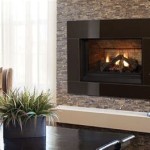Paint Your Fireplace Tile: A Guide to Transforming Your Hearth
A fireplace serves as a focal point in many homes, adding warmth and ambiance to living spaces. However, outdated or aesthetically displeasing fireplace tile can detract from the overall appeal of the room. Instead of undertaking a costly and disruptive tile replacement project, painting the fireplace tile presents a viable and relatively inexpensive alternative. This process allows homeowners to update the look of their fireplace and personalize its design without significant demolition or construction.
Successfully painting fireplace tile requires careful preparation, the use of appropriate materials, and adherence to proper painting techniques. Skipping any of these steps can result in a less-than-desirable finish or, worse, a paint job that quickly deteriorates under the heat and conditions around a working fireplace. This article outlines the key considerations and steps involved in painting fireplace tile to achieve a durable and visually appealing result.
Preparing the Tile Surface
Proper surface preparation is paramount to the longevity and appearance of a painted tile fireplace. The goal is to create a clean, smooth, and slightly porous surface that will allow the paint to adhere effectively. Failure to adequately prepare the tile can lead to chipping, peeling, and an uneven finish.
The first step involves thoroughly cleaning the tile. Use a strong degreaser to remove any dirt, grease, soot, or other contaminants that may be present. A scrub brush can be helpful for dislodging stubborn grime. Rinse the tile completely with clean water and allow it to dry thoroughly. Inspect the tile for any cracks or damage. Use a tile repair caulk or epoxy to fill any imperfections, ensuring a smooth and even surface. Once the repair material has dried completely according to the manufacturer's instructions, sand it smooth with fine-grit sandpaper.
Sanding the tile surface is a crucial step in creating a suitable base for the paint. While some may recommend skipping this step when using certain bonding primers, sanding provides the best long-term adhesion. Use medium-grit sandpaper to lightly roughen the surface of the tile. The goal is not to remove the existing finish entirely, but rather to create a slightly textured surface that the primer can grip. After sanding, remove all sanding dust with a tack cloth or damp rag. Again, allow the tile to dry completely before proceeding to the next step. Consider using a mold and mildew killer if you suspect moisture is accumulating around your fireplace. This will help prevent future problems.
Selecting the Right Paint and Primer
Choosing the correct primer and paint is critical for achieving a durable and heat-resistant finish on fireplace tile. Not all paints are created equal, and using the wrong type can lead to blistering, discoloration, or even fire hazards. Therefore, careful consideration should be given to the specific properties of the paint and primer selected.
A high-quality bonding primer is essential. Bonding primers are specifically formulated to adhere to slick surfaces like tile and provide a stable base for the topcoat. Look for primers that are labeled for use on tile or other non-porous surfaces. Apply the primer according to the manufacturer's instructions, using either a brush or a roller. Ensure that the primer is applied evenly and thinly, avoiding drips or pooling. Allow the primer to dry completely before proceeding to the paint application. A second coat of primer may be necessary for particularly smooth or glossy tiles.
For the paint itself, heat-resistant paint is highly recommended, especially for the area directly surrounding the firebox. Options include heat-resistant enamel paints or specialized fireplace paints designed to withstand high temperatures. Alternatively, for areas further away from the direct heat, a high-quality acrylic latex paint can be used, as long as it's applied over a suitable bonding primer. Consider the desired finish when selecting the paint (e.g., matte, satin, semi-gloss). Choose a paint color that complements the surrounding décor and enhances the overall aesthetic of the room. Consider applying a test area to ensure color and adherence are satisfactory before painting the entire fireplace.
Applying the Paint and Ensuring Durability
The application of the paint requires patience and attention to detail to achieve a smooth, even, and durable finish. Proper technique and multiple thin coats are generally preferable to a single thick coat, which can lead to drips, runs, and uneven drying.
Apply the paint using a high-quality brush or roller, depending on the size and texture of the tile. For grout lines, a brush may be necessary to ensure adequate coverage. Apply the paint in thin, even coats, following the manufacturer's instructions regarding drying time between coats. Allow each coat to dry completely before applying the next one. Depending on the color and opacity of the paint, two or three coats may be required to achieve full coverage and a uniform appearance. Lightly sand between coats with fine-grit sandpaper to smooth out any imperfections and create a better surface for subsequent coats.
Once the final coat of paint has been applied and allowed to dry completely, consider applying a sealant or topcoat for added protection and durability, especially in areas that are prone to moisture or wear. Choose a sealant that is compatible with the type of paint used and follow the manufacturer's instructions for application. Allow the sealant to cure completely before using the fireplace. It is important to note that even with proper preparation and the use of heat-resistant materials, the paint on fireplace tile may eventually show signs of wear and tear, particularly in areas that are exposed to direct heat. Regular cleaning and maintenance can help prolong the life of the paint job. Never use abrasive cleaners on the painted surface, as they can damage the finish. Gentle cleaning with a mild detergent and a soft cloth is usually sufficient.

How To Paint Fireplace Tile Diy Makeover A Blossoming Life

How To Paint Fireplace Tile Diy Makeover A Blossoming Life

How To Paint Fireplace Tile Diy Makeover A Blossoming Life

How To Paint A Tile Fireplace Amber Simmons

110 Diy Fireplace Makeover How To Paint Tile Jessica Welling Interiors

How To Paint Fireplace Tile Diy Makeover A Blossoming Life

Get Cozy Creative Paint Your Fireplace Tiles With Stencils

Sizzling Stencil Style Paint Your Fireplace Tiles Tile Around Home

How To Paint Tile Easy Fireplace Makeover Setting For Four Interiors

Diy Painted And Stencilled Tile On Fireplace Fireplacewithtv Makeover Paint Around
Related Posts








